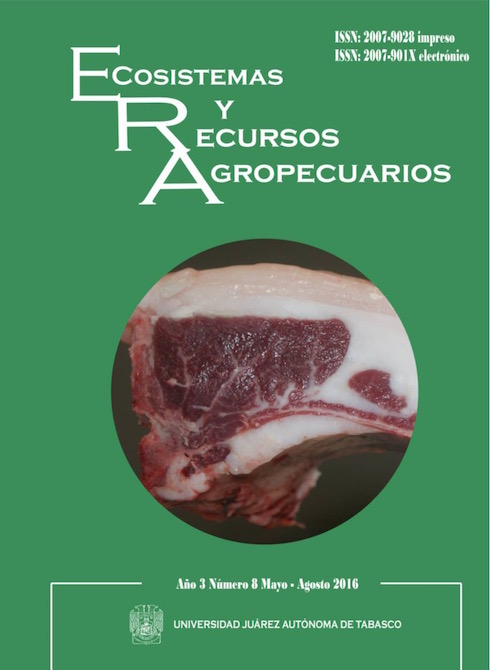EFFECTS OF NON-GENETIC FACTORS ON PRE-WEANING GROWTH TRAITS IN DORPER SHEEP MANAGED INTENSIVELY IN CENTRAL MEXICO
DOI:
https://doi.org/10.19136/era.a3n8.847Keywords:
Birth weight, weaning weight, pre-weaning, weight gain, growth traitsAbstract
The objective of this study was to determine the non-genetic factors which a ect growth traits in Dorper lambs under intensive conditions. Nine hundred and ninety birth weight records and 851 weaning weight data from a commercial sheep farm were used. A model containing the e ects of year of birth, season of birth, litter size, dams' age and gender was used for identi cation of factors a ecting growth traits. Birth weight was highest (p < 0.05) in summer and lowest in winter and spring. Male lambs excelled females in birth weight, weaning weight, and average daily gain. Young dams produced o spring with a lower (p < 0.05) birth weight and weaning weight than older ewes As a conclusion, important in uences of environmental factors on growth traits were identi ed for Dorper lambs.
Downloads
References
Afolayan RA, Adeyinka IA, Lakpini, CAM (2006) The estimation of live weight from body measurements in Yankasa sheep. Czech Journal of Animal Science 51: 343–348.
Benyi K, Norris D, Karbo N, Kgomo KA (2006) Effects of genetic and environmental factors on pre-weaning and post-weaning growth in West African crossbred sheep. Tropical Animal Health and Production 38: 547-554.
Published
Issue
Section
License
Aviso de copyright
Los autores que se envían a esta revista aceptan los siguientes términos:
una. Los autores conservan los derechos de autor y garantizan a la revista el derecho a ser la primera publicación del trabajo con una licencia de atribución de Creative Commons que permite a otros compartir el trabajo con un reconocimiento de la autoría del trabajo y la publicación inicial en esta revista.
B. Los autores pueden establecer acuerdos complementarios separados para la distribución no exclusiva de la versión del trabajo publicado en la revista (por ejemplo, en un repositorio institucional o publicarlo en un libro), con un reconocimiento de su publicación inicial en esta revista.
C. Se permite y se anima a los autores a difundir su trabajo electrónicamente (por ejemplo, en repositorios institucionales o en su propio sitio web) antes y durante el proceso de envío, ya que puede conducir a intercambios productivos, así como a una cita más temprana y más extensa del trabajo publicado. (Consulte El efecto del acceso abierto).

